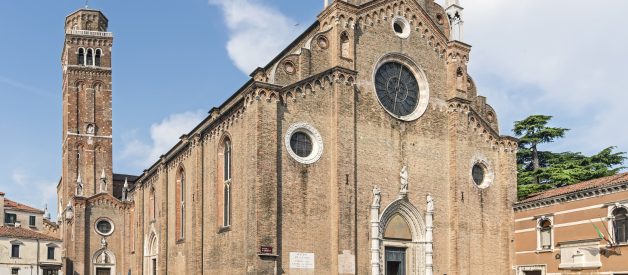An artwork of high drama and beauty
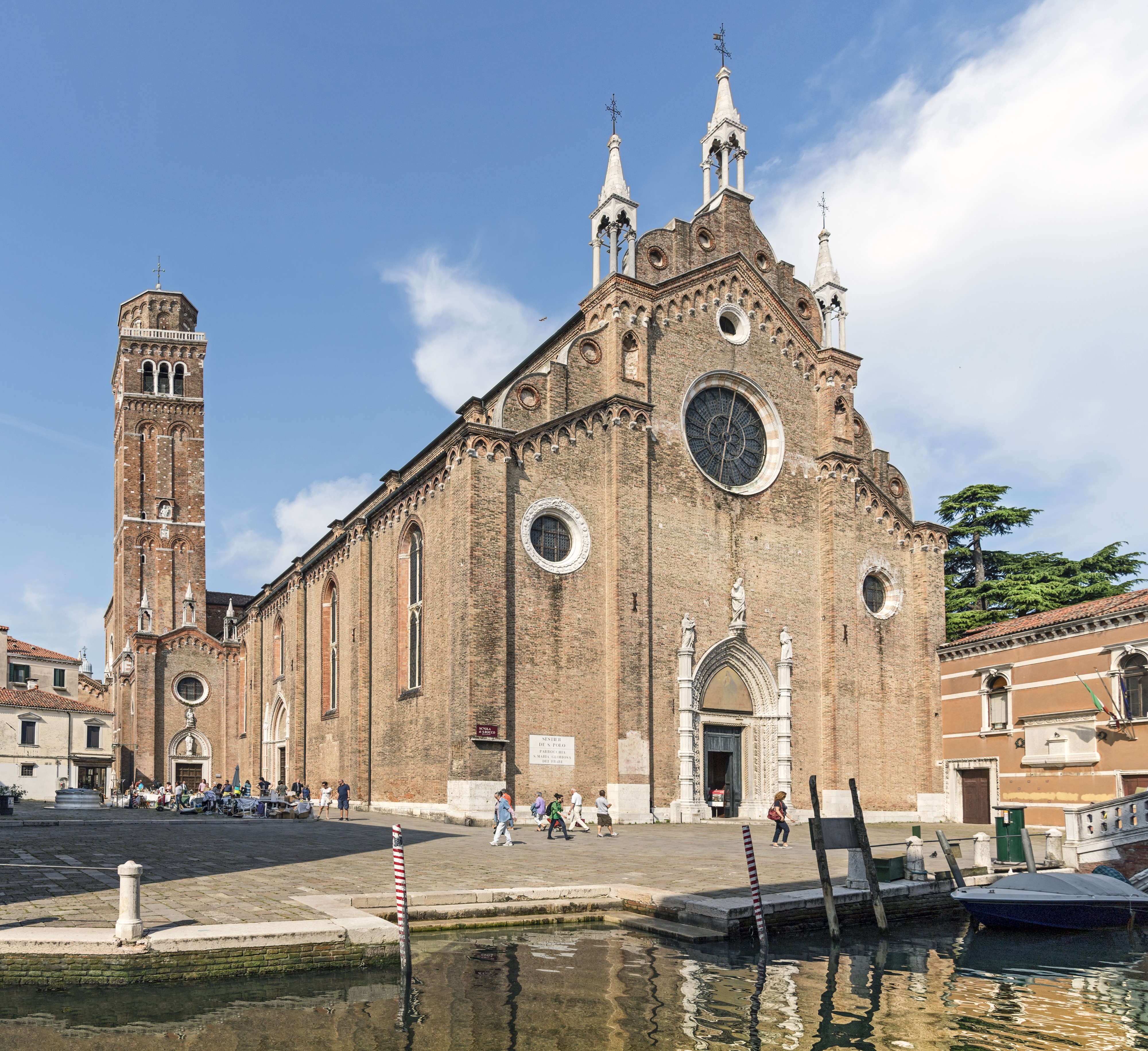 Facade of Santa Maria Gloriosa dei Frari in Venice. Via Wikimedia Commons
Facade of Santa Maria Gloriosa dei Frari in Venice. Via Wikimedia Commons
Venice crumbles, Venice trembles. It?s waters hushed and gleaming. Tiny arched bridges cross over the narrow waterways like hooked fingers. Plants grow only in pots perched on balconies. The occasional pomegranate tree bears a fruit aloft, over a wall to a private garden.
To walk the fantastic tapestry of interlocking lanes in Venice is to play a game with the city. The narrowest of alleyways suddenly open into wide squares, and just as suddenly, converge into shadowy lanes again.
Respite from this maze can be found in the many churches that populate the city. Chilled, glorious interiors, simple hall-like spaces whose walls are lined with chapels and tombs and great oil paintings. If you visit the Basilica di Santa Maria Gloriosa dei Frari, you will see one of the finest paintings in the whole city. Perhaps, in the whole world.
?And anon the soul came again to the body of Mary, and issued gloriously out of the tomb, and thus was received in the heavenly chamber, and a great company of angels with her.?
Titian painted the Assumption of the Virgin in around 1518, when he was 26 years old or thereabouts. The painting is nearly seven metres high, and hangs above the high altar. It is charged with movement, drama and optimism.
 ?Assumption of the Virgin? by Titian, 1516?18, via Wikimedia Commons
?Assumption of the Virgin? by Titian, 1516?18, via Wikimedia Commons
You don?t have to be a Christian to smile at this painting; you don?t even need to believe in heaven to understand where the woman on the cloud is going to. The image shows the Virgin Mary shortly after her death, as her spirit emerges from her tomb and is born upwards towards heaven where God is waiting for her.
God is shown as a diagonal cleft in the golden ether. Mary herself ? the true focus of the work ? stands in a devout pose. Her drapery twists around her as if caught by a breeze, emphasising the energy of her ascent. She stands on bales of thick, doughy cloud, carried upwards by divine cherubs. Below, Titian has more or less omitted the stone tomb and instead makes the earthly realm one of robed men: the apostles gathered in awe and lament.
The tale of the Virgin?s death and subsequent heavenward ascent ? supposedly three days later ? has its source not in the Gospels but in the apocryphal literature of the 3rd and 4th centuries. Titian painted this image when the cult of the Virgin Mary was at its height, a phenomena that had been gathering pace for several centuries.
Many ancient religions prospered under the reassuring presence of a mother figure, a Mater Amabilis, which acted as a stabilising force and a familial point of veneration. For the Christian Church, the Virgin Mary emerged as the Purissima or ?most pure? of figures.
The comforting symbolism of the mother-child relationship has obvious appeal, and has its representational roots in many pagan religions, perhaps most notably that of the Egyptian goddess Isis holding her son Horus in her lap. Debates wrangled through the early history of the church about the exact status of the ?Mother of God? ? the extent and nature of her divinity ? but by the 13th century the Marian cult was firmly part of the Christian outlook.
The era of the Crusades, those proud military forays to recapture the Holy Lands, was a time of exceptional religious ardour in Europe. It reached its most soaring manifestation in the Gothic cathedrals of France, many of which were dedicated to ?Our Lady? or ?Notre Dame?.
It was also during the 13th century that the hugely influential Golden Legend appeared, a compendium of traditional stories about the saints and miracle tales, which was widely drawn upon as a sourcebook by artists of the following centuries. The story of Mary?s assumption was retold and cemented in this book, after which its representation in European art was established beyond question: ?And anon the soul came again to the body of Mary, and issued gloriously out of the tomb, and thus was received in the heavenly chamber, and a great company of angels with her.?
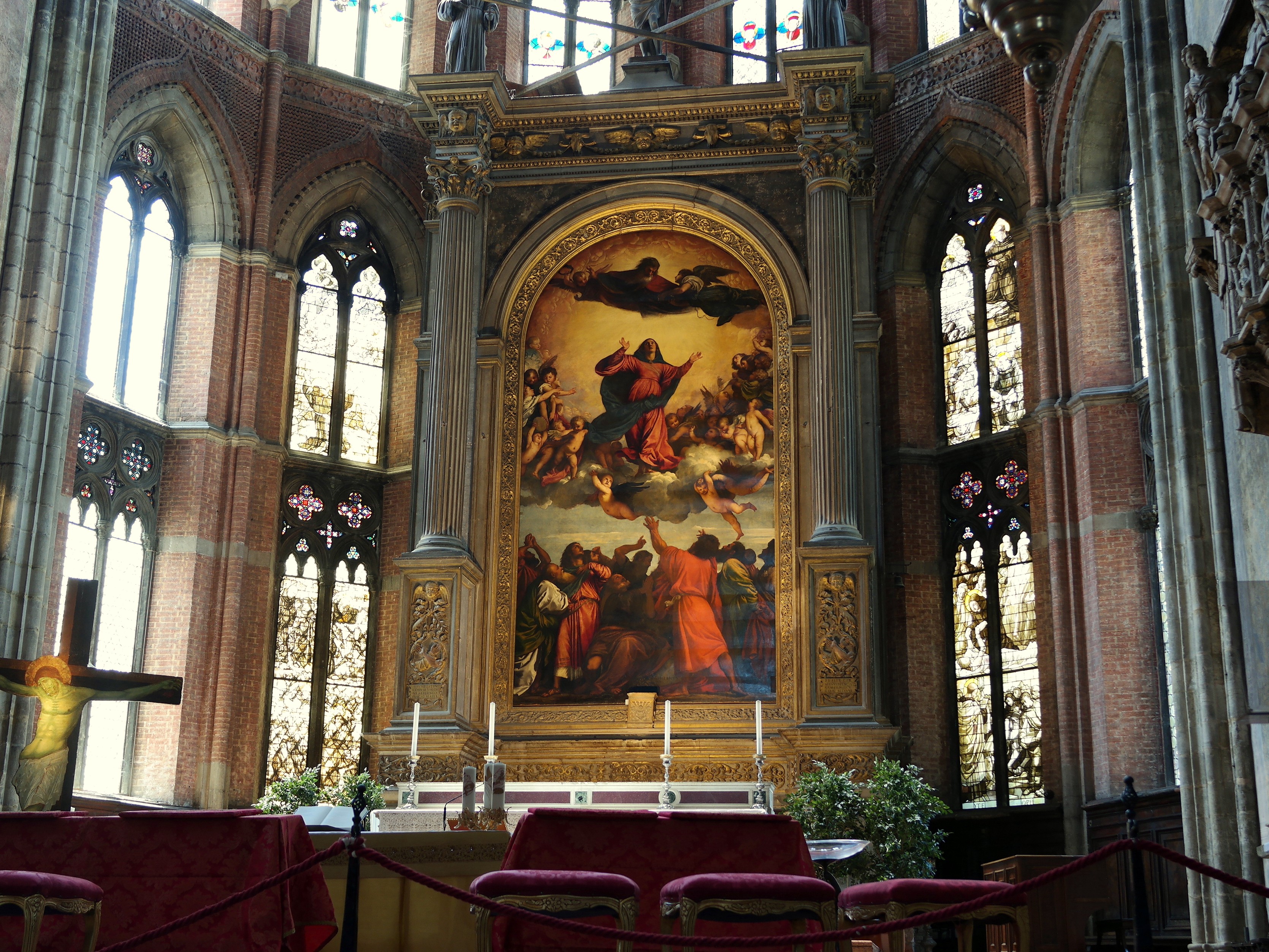 ?Assumption of the Virgin? by Titian, 1516?18, at the high altar of the Basilica di Santa Maria Gloriosa dei Frari, Venice. Photo by Luca Aless. Source
?Assumption of the Virgin? by Titian, 1516?18, at the high altar of the Basilica di Santa Maria Gloriosa dei Frari, Venice. Photo by Luca Aless. Source
Titian?s painting captures the miracle of Mary?s ascent to heaven. He utilises the common convention of deifying vertical space, so that the picture grows more sacred as it rises upwards. To this end, the composition is clearly divided into three sections: the earthly realm where the apostles stand; above this the Virgin being borne aloft by sweeping clouds; above the Virgin the glowing dominion God the Father.
From a compositional point of view this tri-partite scheme is the most obvious of a complexity of subtle devices the artist has used to bring a sense of music to the image, all of which help to further venerate the Virgin?s persona.
Firstly there is the triangular composition, made up of the two red-robed apostles at the foot of the painting and reaching to a peak at the Virgin?s red clothing, which guides the eyes from the floor to he heavenly realm. It also lends the picture a formal stability.
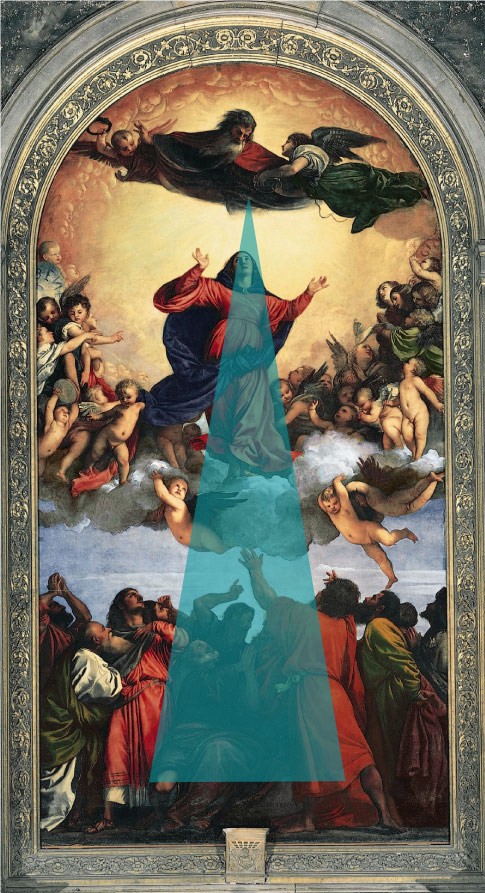
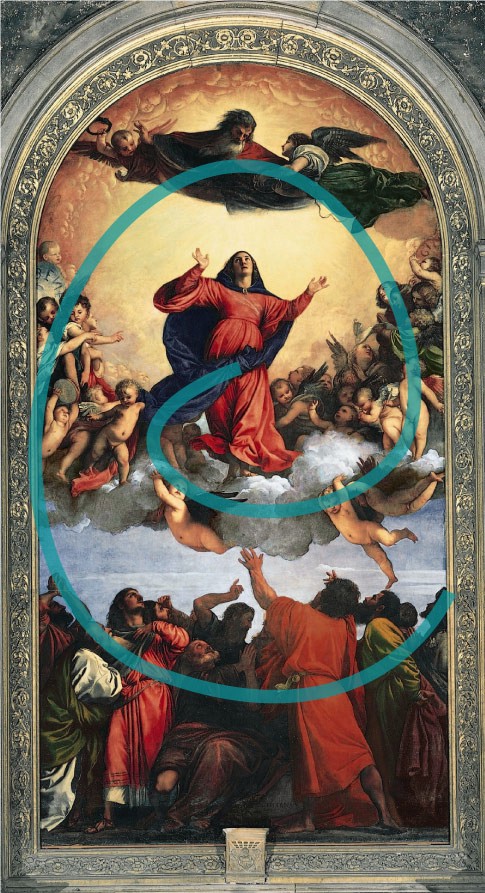 Triangular and spiral compositions (above). ?Assumption of the Virgin? by Titian, 1516?18, via Wikimedia Commons, modified by the author
Triangular and spiral compositions (above). ?Assumption of the Virgin? by Titian, 1516?18, via Wikimedia Commons, modified by the author
Then there is the more subtle spiral shape that is instigated by and emanates from the Virgin?s blue shawl, bringing a degree of animation to the composition and, again, training the eye on the Virgin.
Most elegantly, and most simply of all, the upper half of the painting forms a perfect circle made by the curved edges of the cloud and the rounded head of the panel, at the very centre of which the Virgin?s head is positioned.
Titian?s overall handling of light and space is masterly, as is his depiction and variety of human forms. Just look at the plethora of cherubs that adorn the cloud, how each one is individualised ? singing or playing a musical instrument ? yet also blended together in the rising wave of animation.
It is little wonder, then, that this painting won Titian many plaudits and set him on a course to become on of Italy?s greatest painters. He died in 1576 and is buried in the same church where this masterpiece hangs.
